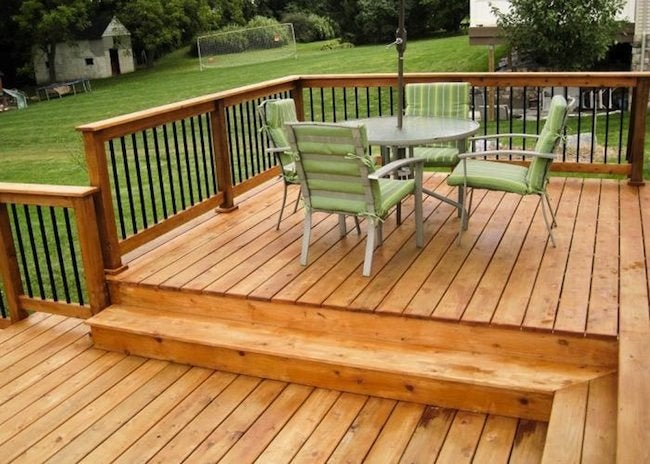The presence of wood rot on an outdoor deck can cause serious issues for any Burke, VA homeowner. If left untreated, wood rot can lead to costly structural damage and even the need for complete replacement. Therefore, it is important to be aware of the signs and know how to properly address the issue in order to protect your home and preserve its value.
Wood rot occurs when fungi and other organisms attack wooden surfaces that are exposed to moisture or humidity. It is important to recognize the various signs of wood rot so that appropriate action can be taken before more serious damage occurs. Common signs include discoloration, mold growth, softness in certain areas of the deck, decay, and splintering or cracking.
It is possible for homeowners to fix wood rot themselves; however, if the damage is extensive it may require professional help. For a complete rebuild, you may need a deck contractor, but for other repairs, you could get by with a handyman may be your best bet.

A Bit More About Wood Rot
Signs of wood rot include dark spots or streaks on the surface of the wood, softness when pressed with a screwdriver or other tool, splitting or cracking along the grain lines, and visible mold or mildew on the deck boards. If left untreated, wood rot can spread quickly throughout an entire deck.
Removing rotted wood and replacing it with new material should be done as soon as possible. It’s also important to ensure that there are no water leaks or standing water around the deck that could lead to further damage. Applying a sealant or stain regularly will help protect against future decay by providing a barrier from moisture and UV rays from sunlight.
Identification Of Affected Areas
Identifying the areas of a deck that have been affected by wood rot can be difficult, as it is often hidden under layers of paint or sealant. To accurately assess the damage, it is necessary to remove any surface coverings and thoroughly inspect the wood.
Possible Causes
Wood rot is caused by prolonged exposure to moisture, which can occur from rain, high humidity levels, or poor drainage around the deck. Poor ventilation in the area can also increase the likelihood of rot, as it creates a damp environment that promotes the growth of mold and mildew. Structural issues or damage to the deck can leave it vulnerable to water infiltration and subsequent rotting.
Repair Options
Despite the best prevention efforts, wood rot can still occur on an outdoor deck. In such cases, it is important to know what repair options are available and to choose the one that best fits the situation.
This will involve removing any decaying material, cutting out sections of wood, and then re-installing it with screws or fasteners. This can be a time-consuming process, but it provides a long-term solution that will ensure the structural integrity of the deck.
Another option is to use a special type of epoxy filler which can fill in any gaps or cracks in the wood caused by rot. The epoxy also acts as a sealant and prevents moisture from entering into the wood and causing further damage. This is a quicker solution than replacing entire sections of boards, but may not be as effective in the long run if not done properly.
Another solution is to use a wood hardener, which helps to strengthen weakened wood fibers caused by water damage or rot. The hardener penetrates deep into the wood, restoring its original strength and rigidity. This can also be used in combination with a sealant for added protection against future damage.
Long-Term Protection
In order to ensure that the outdoor deck remains protected against wood rot indefinitely, it is important to take certain steps for long-term protection. Regular maintenance is key to maintaining the integrity of the deck, and this includes cleaning and surveying the surface regularly.
Cleaning should be done at least twice a year with a pressure washer or scrub brush, in order to remove any dirt and debris that may have accumulated.
It is also important to check for signs of wood rot on a regular basis, so any minor damage can be addressed quickly before it becomes a larger issue. Inspecting the deck once or twice per year will help keep it in good condition over time and reduce the need for more extensive repairs down the road.
Wood rot is a serious issue that must be addressed promptly to ensure the safety and longevity of an outdoor deck. By following these guidelines, homeowners can ensure that their outdoor decks remain safe and secure for years to come.
